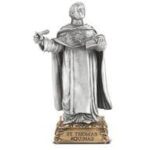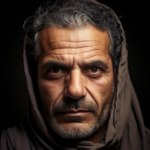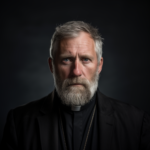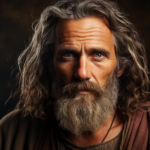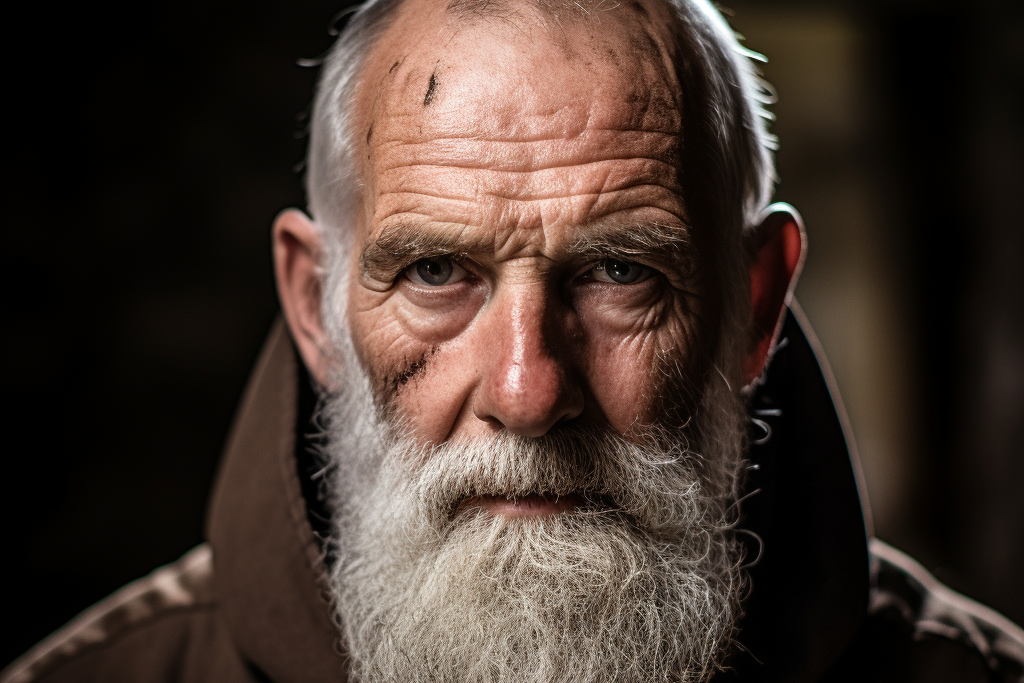
St. Lawrence O’Toole
Saint Lawrence O’Toole
St. Lawrence O’Toole: The Miraculous Soul of Medieval Ireland
- When they lived: St. Lawrence O’Toole, also known as Lorcan Ua Tuathail, was born in 1128 in County Kildare, Ireland.
- Where they lived: St. Lawrence O’Toole spent most of his life in the heartland of Ireland, drawing inspiration from the mystical Irish countryside.
- Notable world events during the time of their life:
- The Battle of Hastings (1066): William the Conqueror’s victory at Hastings reshaped the course of British history.
- The First Crusade (1096-1099): European Christians embarked on a sacred pilgrimage to reclaim the Holy Land.
- The founding of the University of Bologna (1088): The oldest university in continuous operation came into being, shaping modern education.
- The signing of the Magna Carta (1215): This document laid the groundwork for constitutional law and individual rights.
- Their patronage: St. Lawrence O’Toole is revered as the patron saint of Dublin, the capital city of Ireland.
Pronunciation
The Irish will call him Lorcan Ua Tuathali, the French will go with Laurent d’EU, and the English will simply say Lawrence O’Toole. Whichever variant you prefer, this Irish saint-prince who became a hostage at ten experienced excruciating difficulties that he knew and understood what being in lack meant.
The Sad Young Prince
Lorcan, or Lawrence, was born in 1128 at Castledermont, Kilkea, Ireland. The youngest of four sons of King Maurice of Hy Murray and Mother O’ByrneThe family resided in Maistiu, now County Kildare.
Lawrence’s father fell out with Dermont Mac Murrogh, the King of Leinster, and in exchange for peace, Lawrence was handed over to King Dermont as a hostage by his father. Lawrence was just ten. At the hands of Dermont, poor Lawrence was treated inhumanly.
For two years, the boy was in chains, ill-housed, and barely fed. Lawrence’s condition was so pitiful that his father compelled the king to release him to a monastery in Glendalough where he could reclaim him.
Breath of fresh air
Lawrence was released to the Bishop of Glendalough, the monastery’s abbot in the County of Wicklow, who cared for him. He received an amonastic education and decided to become a monk. His father, on arrival,realized his son had fallen in love with the church and gave Lawrence his blessing.
For 13 years, Lawrence lived in the monastery, studying and practicing a life of holiness that was so clear to everyone in his community. The young man was a model of virtue. When the Bishop of Glendalough passed away, the congregation unanimously appointed Lawrence the Abbot of the monastery. Lawrence was just about 25.

Being young and holy definitely came with its perks. Lawrence led the community with so much wisdom and prudence that he was regarded as Glendalough’s greatest abbot since its founder, Kelvin. He opened the monastery doors to the poor and people in need. When famine broke out,he sold the monastery’s properties to cater to the people’s needs.
A Higher Calling Beckons
In 1160, Lawrence was called upon to serve as the bishop of Glendalough,a position he rejected with all humility, citing his unworthiness. Still,when the See of Dublin became vacant the following year, Lawrence was chosen as the Archbishop of Dublin.
Lawrence was just about 33 years old in 1162 when he was consecrated as the Metropolitan See of Dublin. He played a prominent role in the 12th-century reformation of the Irish church and encouraged the people of Dublin to become true Christians in words and action.
He laid the foundation of Holy Trinity Cathedral, now Christ Church, and invited Augustinian monks from France to help in the spiritual formation of priests and the people of the diocese. Lawrence saw the rebuilding of many churches in Dublin.
In all of these, he never neglected the needs of the needy and poor he never neglected.Dublin was in great economic trouble, with some parents abandoning their children. Lawrence set up a care center for the left-over and orphaned children.
Mediator in Politics
When the Anglo-Normans besieged the city of Dublin under their leader Strongbow, Lawrence braved the odds to go to the enemy camp to negotiate peace. While he was still talking with the Norman leader, some knights forcefully entered the city, killing and looting.
Lawrence ran back to the city to stop the slaughter. He administered spiritual consolation to the wounded, encouraged the city’s defenders,and helped bury the dead. He never gave up until peace was brokered.
As a negotiator, Lawrence was respected by all, Vikings and Normans alike. He always comes in when difficult situations arise. In 1179, he led five bishops to the Third Lateran Council in Rome. Pope Alexander 111, impressed by him, made him a papal legate.
He made travels suing for peace between countries, especially to England under King Henry 11. In a peace treaty with England in 1180, he took the throne.
Peacemaker Until the End
Lawrence arrived in England to settle a dispute between Henry 11 and King Roderic of Ireland. He was detained at Abingdon Abbey for three weeks and followed the king to Normandy, still seeking peace. But King Henry wouldn’t see him.
It was in Normandy that he took ill and was taken to the Abbey of St.Victor Eu. Lawrence died on November 14, 1180, and was buried at the monastery of Eu, Normandy.
His tomb at Eu soon became a pilgrimage center, and many miracles were attributed to his intercession.
On December 11, 1225, Pope Honorius 111 canonized him as a saint, 45 years after his death.
5 Interesting Facts About St. Lawrence O’Toole
- Do you know his favorite place in the world is a cave between rocks?
and a deep lake near the monastery of Glendalough? Yearly, he took
off 40 days from his schedule to spend his retreat at the cave. - Lawrence is honored as the Patron of Dublin for his defense and
protection of Dublin whenever it mattered. - When Lawrence finds himself at the dinner table with others, he
would color his water to make it look like wine. He doesn’t drink.
and disliked drawing attention to himself. - A man of history Lawrence was the firstborn Irish Bishop of Dublin.
Dublin at his time was ruled by the Norwegians. - He stopped the bleeding on his head with holy water and carried on.
with celebrating Mass. This event took place in England. While he
As he approached the altar to officiate, he was attacked by a maniac.
Prayer to St. Lawrence O’Toole
There is no official prayer for this saint.
